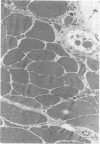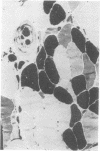Abstract
A patient with scapuloperoneal atrophy of neurogenic type, in whome there was also distal sensory impairment, has been studied with conventional EMG, single fibre EMG, and muscle biopsy. This disorder, described by Davidenkow, may be a distinct entity.
Full text
PDF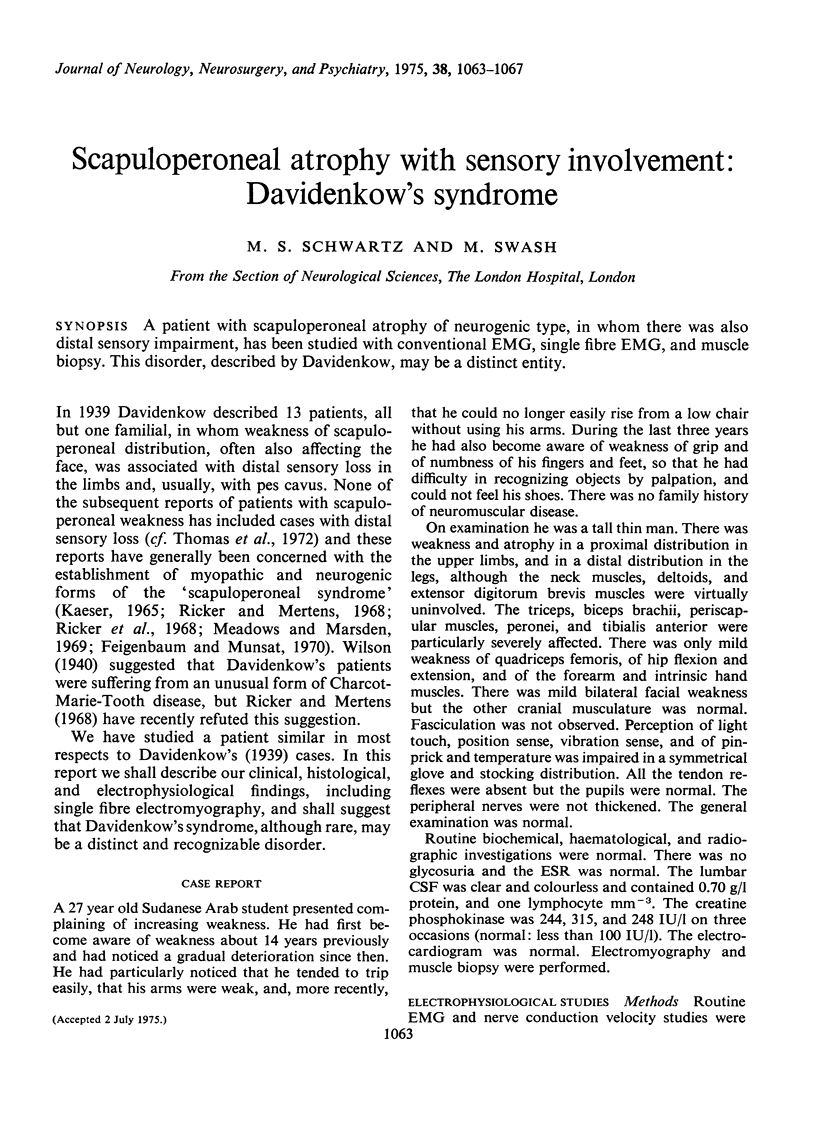
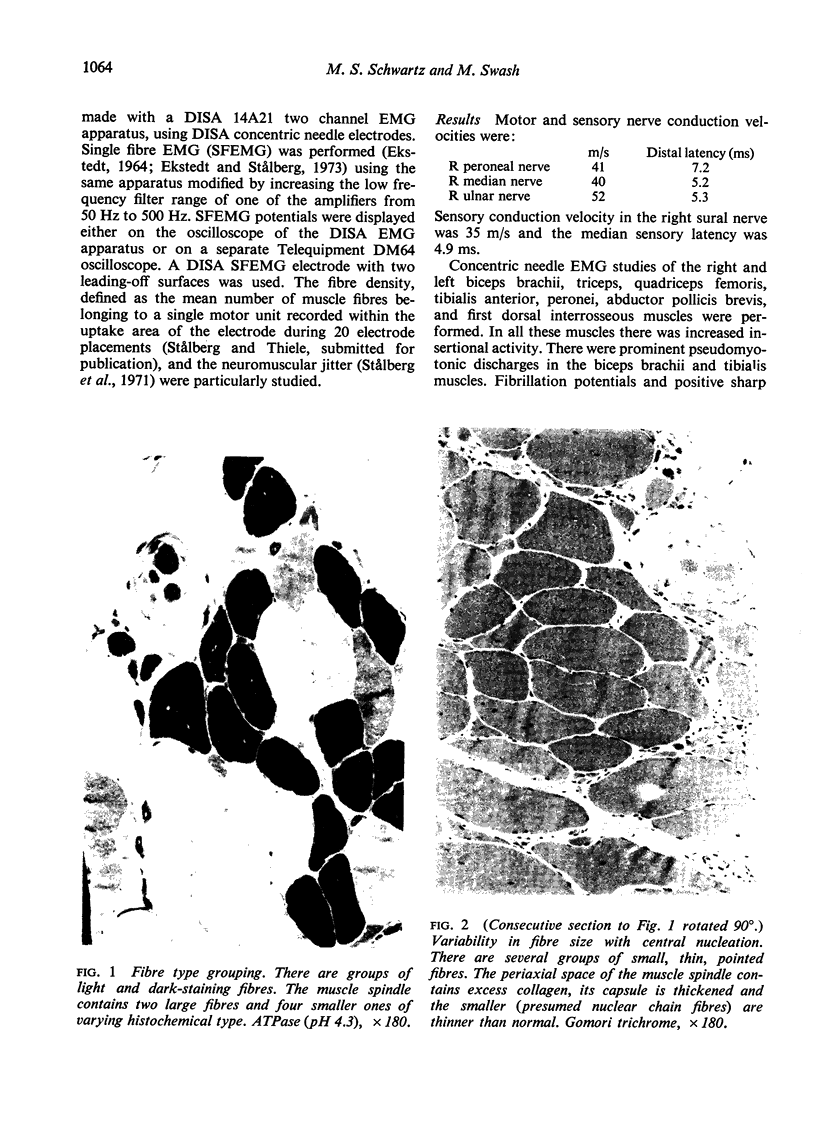
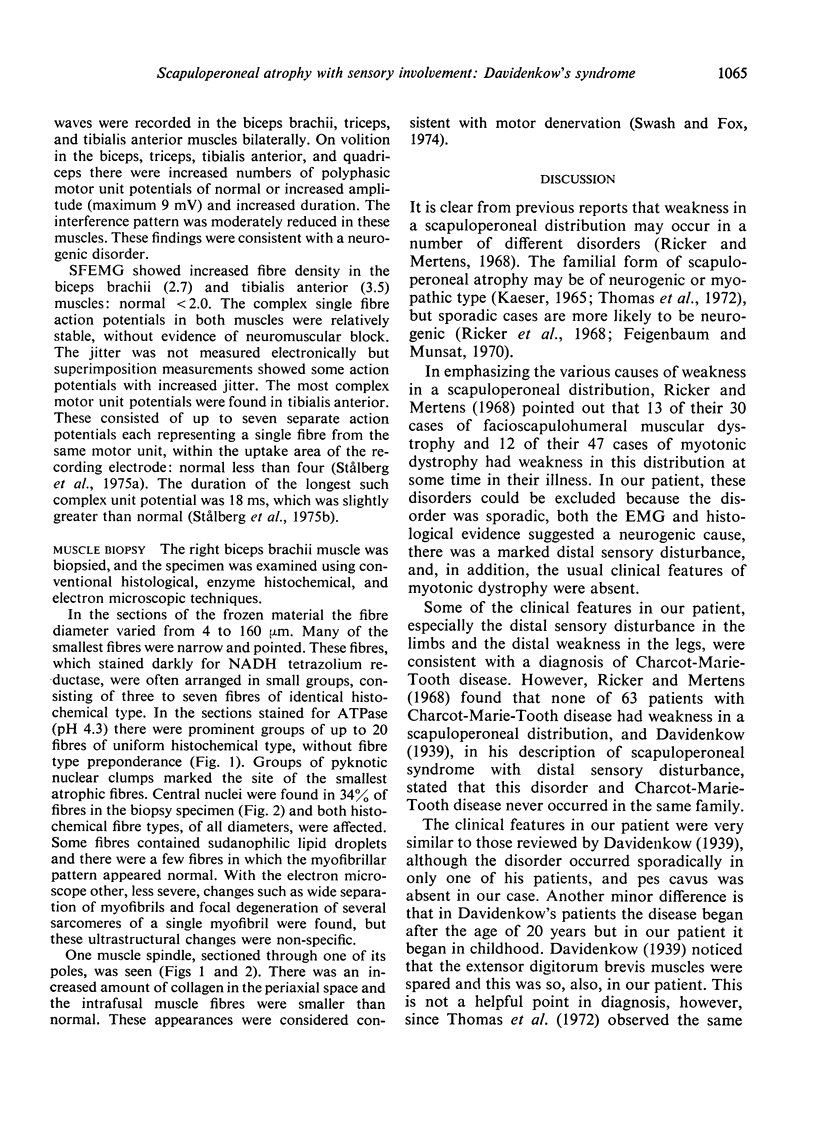
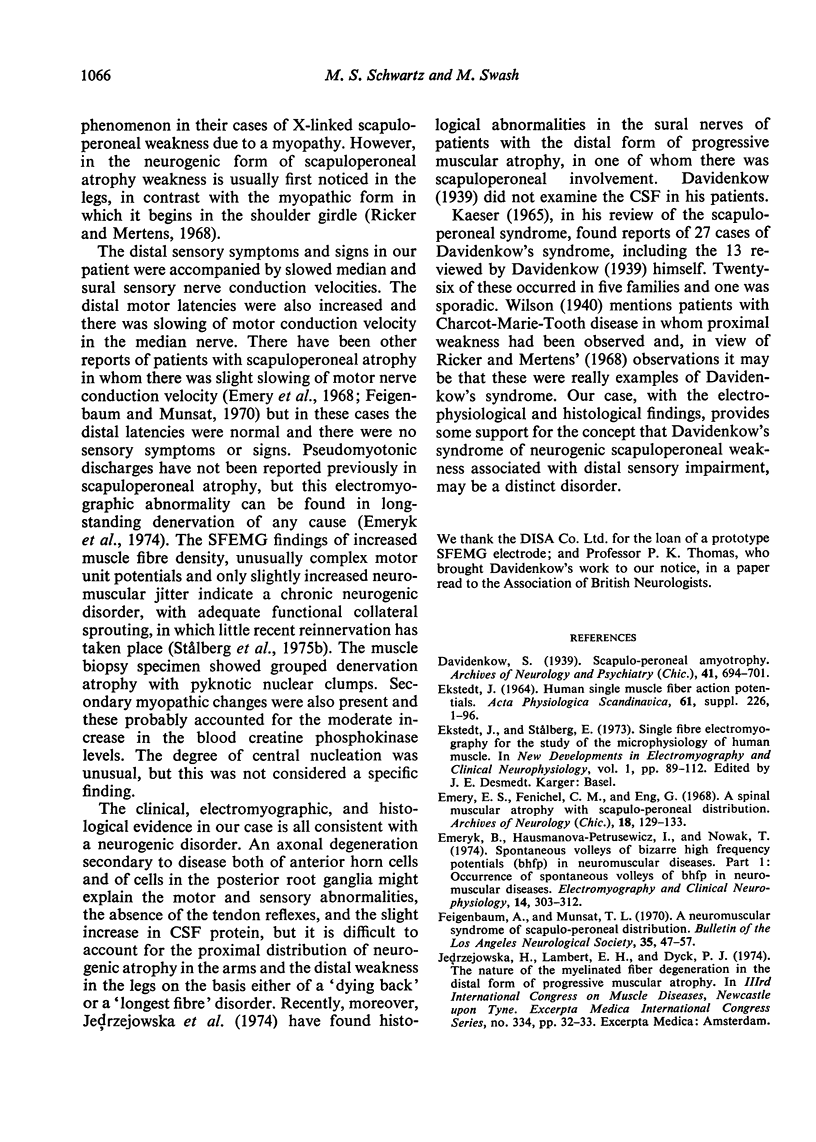
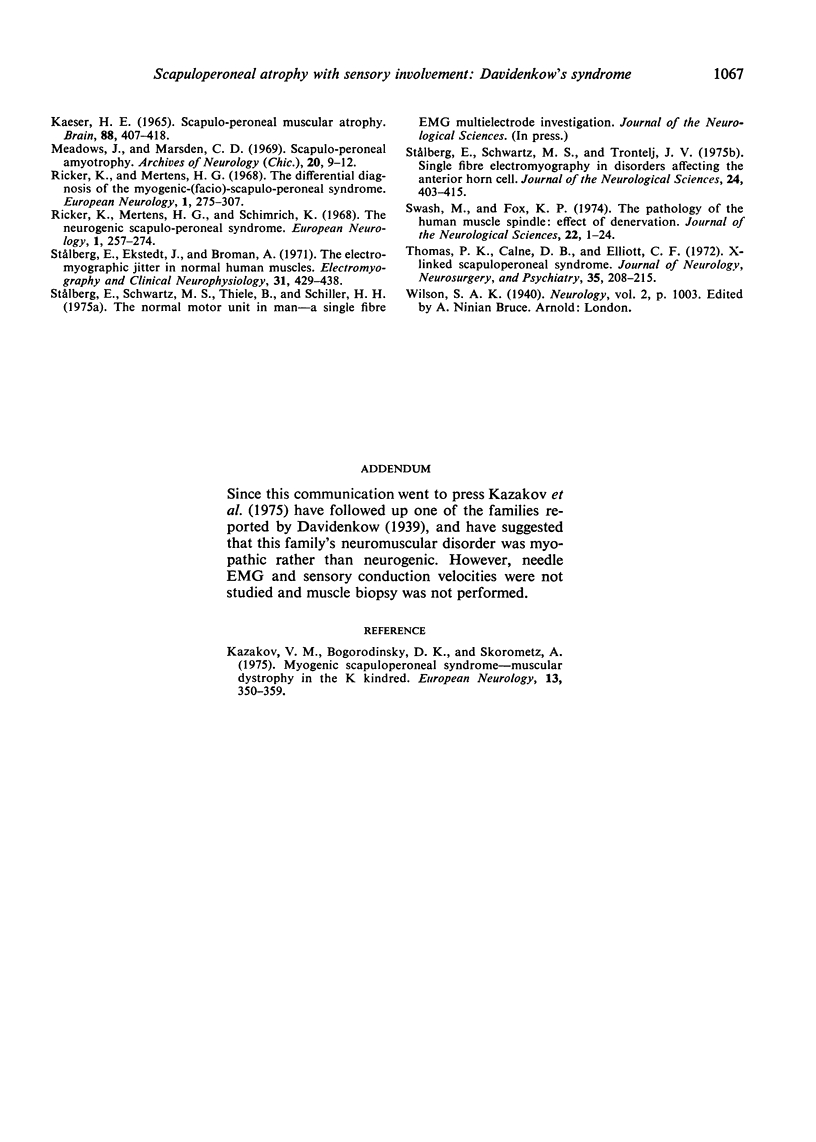
Images in this article
Selected References
These references are in PubMed. This may not be the complete list of references from this article.
- EKSTEDT J. HUMAN SINGLE MUSCLE FIBER ACTION POTENTIALS. EXTRACELLULAR RECORDING DURING VOLUNTARY AND CHEMICAL ACTIVATION. WITH SOME COMMENTS ON END-PLATE PHYSIOLOGY AND ON THE FIBER ARRANGEMENT OF THE MOTOR UNIT. Acta Physiol Scand Suppl. 1964:SUPPL 226–226:1+. [PubMed] [Google Scholar]
- Emery E. S., Fenichel G. M., Eng G. A spinal muscular atrophy with scapuloperoneal distribution. Arch Neurol. 1968 Feb;18(2):129–133. doi: 10.1001/archneur.1968.00470320031003. [DOI] [PubMed] [Google Scholar]
- Emeryk B., Hausmanowa-Petrusewicz I., Nowak T. Spontaneous volleys of bizarre high frequency potentials (b.h.f.p.) in neuro-muscular diseases. Part 1. Occurrence of spontaneous volleys of b.h.f.p. in neuro-muscular diseases. Electromyogr Clin Neurophysiol. 1974 Jun-Jul;14(3):303–312. [PubMed] [Google Scholar]
- Feigenbaum J. A., Munsat T. L. A neuromuscular syndrome of scapuloperoneal distribution. Bull Los Angeles Neurol Soc. 1970 Apr;35(2):47–57. [PubMed] [Google Scholar]
- Kaeser H. E. Scapuloperoneal muscular atrophy. Brain. 1965 Jun;88(2):407–418. doi: 10.1093/brain/88.2.407. [DOI] [PubMed] [Google Scholar]
- Meadows J. C., Marsden C. D. Scapuloperoneal amytrophy. Arch Neurol. 1969 Jan;20(1):9–12. doi: 10.1001/archneur.1969.00480070019002. [DOI] [PubMed] [Google Scholar]
- Ricker K., Mertens H. G., Schimrigk K. The neurogenic scapulo-peroneal syndrome. Eur Neurol. 1968;1(5):257–274. doi: 10.1159/000113668. [DOI] [PubMed] [Google Scholar]
- Ricker K., Mertens H. G. The differential diagnosis of the myogenic (facio)-scapulo-peroneal syndrome. Eur Neurol. 1968;1(5):275–307. doi: 10.1159/000113669. [DOI] [PubMed] [Google Scholar]
- Stålberg E., Ekstedt J., Broman A. The electromyographic jitter in normal human muscles. Electroencephalogr Clin Neurophysiol. 1971 Nov;31(5):429–438. doi: 10.1016/0013-4694(71)90164-7. [DOI] [PubMed] [Google Scholar]
- Stålberg E., Schwartz M. S., Trontelj J. V. Single fibre electromyography in various processes affecting the anterior horn cell. J Neurol Sci. 1975 Apr;24(4):403–415. doi: 10.1016/0022-510x(75)90166-5. [DOI] [PubMed] [Google Scholar]
- Swash M., Fox K. P. The pathology of the human muscle spindle: effect of denervation. J Neurol Sci. 1974 May;22(1):1–24. doi: 10.1016/0022-510x(74)90050-1. [DOI] [PubMed] [Google Scholar]
- Thomas P. K., Calne D. B., Elliott C. F. X-linked scapuloperoneal syndrome. J Neurol Neurosurg Psychiatry. 1972 Apr;35(2):208–215. doi: 10.1136/jnnp.35.2.208. [DOI] [PMC free article] [PubMed] [Google Scholar]



